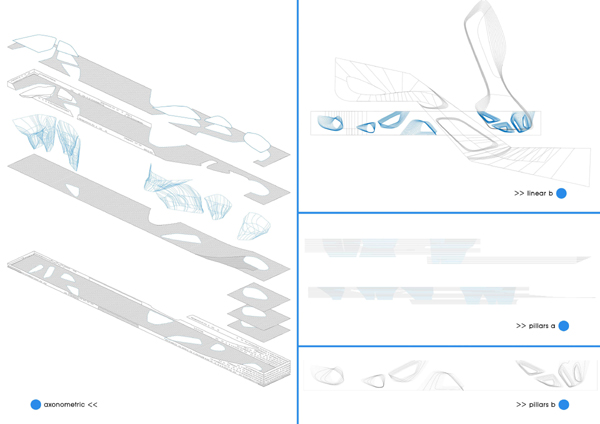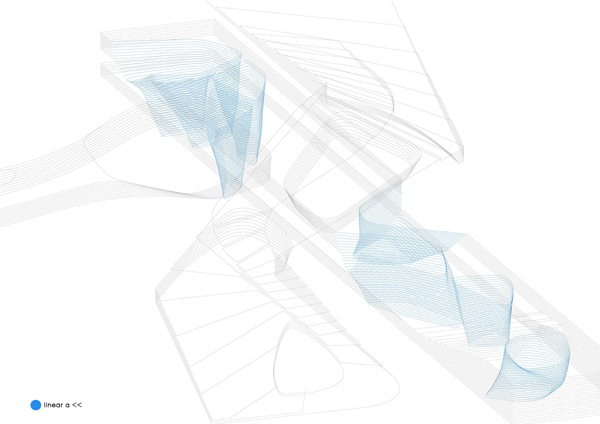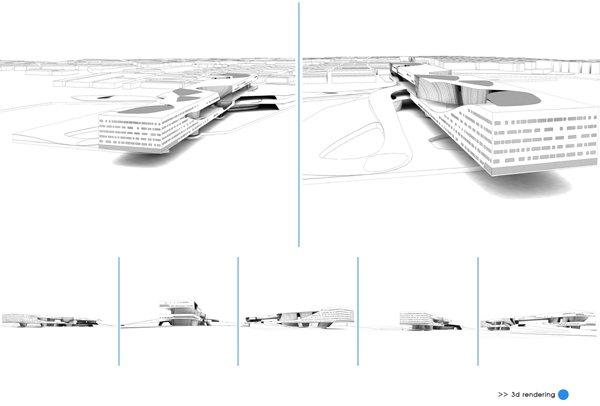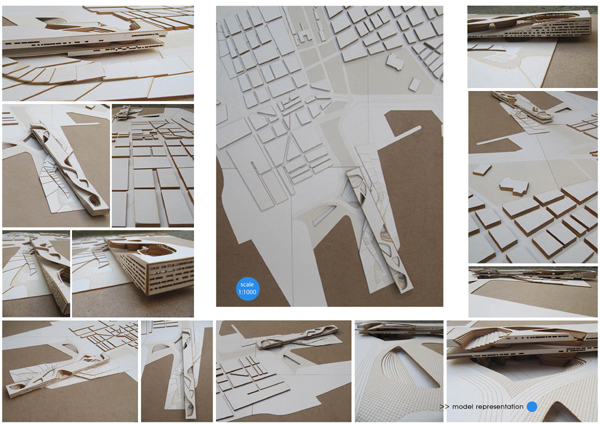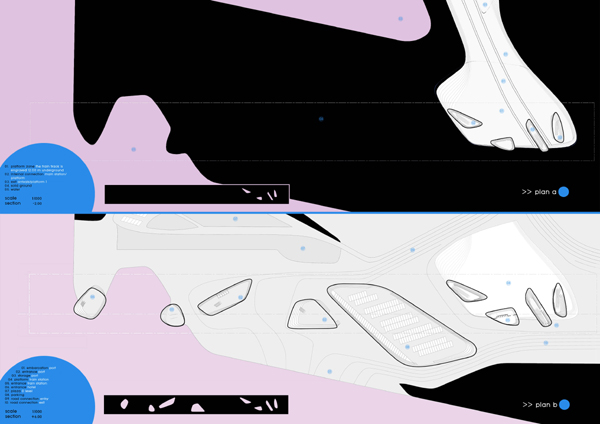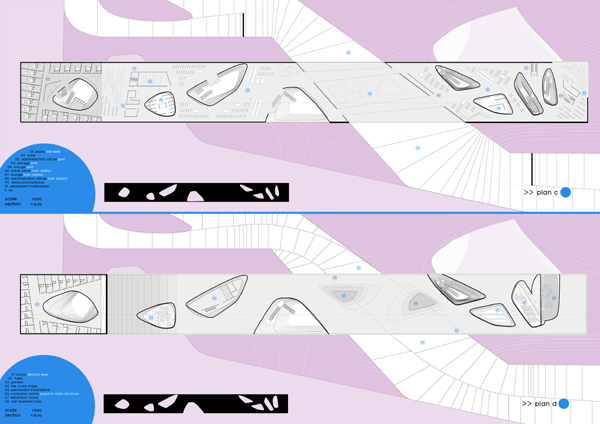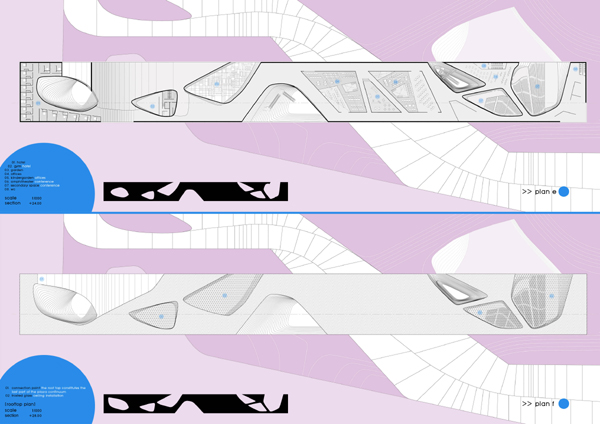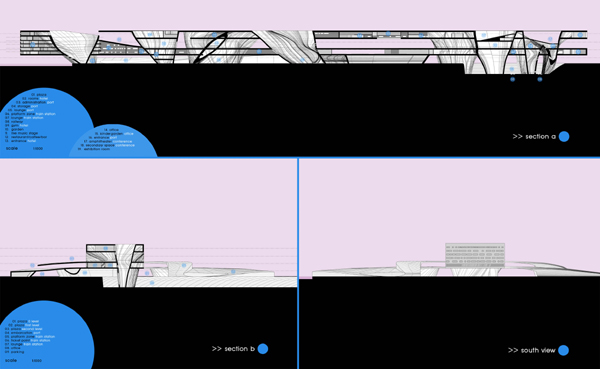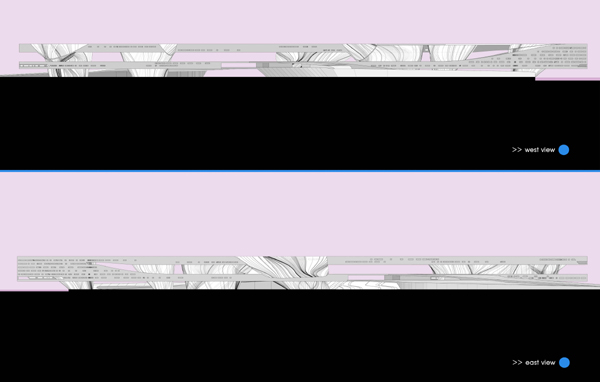STUDENTS PROJECTS
2010
22 June, 2012
Commercial wharf of Volos
This project is a great scale intervention, situated on the commercial wharf of Volos, which affects not only the surrounding district, but the whole city.
Student : Antoniadis Simos
Supervisor: Daskalakis Konstantinos, Triantafillidis Giorgos
University of Thessaly_ Department of Architecture Engineering
Date of Presentation: 28/09/2010
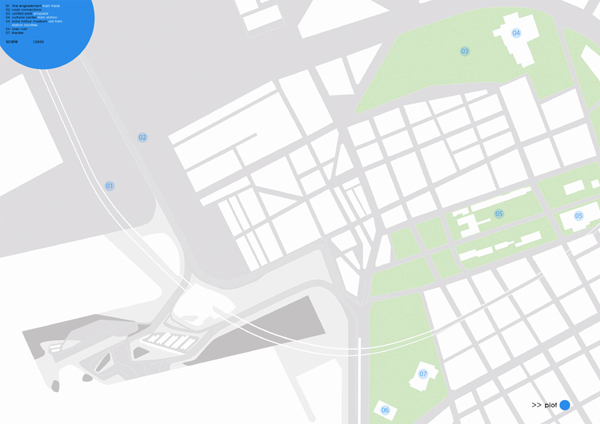
The concept is based on the unification and concentration of the two biggest transport city terminals, the train station and the passenger port accompanied by other equally important functions (hotel, office blocks, conference center, exhibition halls, etc). There are the obvious benefits of the passengers' service convenience and efficiency and the city's economy growth -Volos is a very vibrant city and a tourist destination with a very active port terminal especially during the summer months- deriving from an upgraded, multi-transport terminal, connecting the means directly; but most importantly, the concentration of these facilities on the wharf, allows the regeneration of a large city area, through the urban reformation that takes place: the dead-end rail track, that used to pass through habitable areas and cut the urban web in two, is now traced underground while u-turning to continue linearly. The space gained by the reformation is used to unify the various parks and plazas, scattered all over the district creating a great and continuous green zone that connects -through the wharf- to the waterfront.
On the meeting point of the waterfront and the green zone, starts a very important, linear, "8" - shaped open space zone that plays a significant part in the composition. It tilts in order to gain hide, intersects the building, then passes through it. By the limits of the wharf it u-turns, intersects the building again in higher level and ends exactly where it began. On the higher intersection point the structure separates in two distinctive parts, creating a middle space -also open- that divides the building functionally: the first level accommodates the heavy public facilities (station, port) while on the second level one can find less public facilities such as the conference center and the office blocks. The whole building itself is elevated and the 0 level is totally dedicate to serve the automobile movement from and to the port and train station and is appropriately connected to the local road system.
The oblong shaped wharf was difficult to handle but challenging at the same time. Numerous form experimentations, based on the port and station needs (the rail track was inflexible and the ships' rest area predefined), shared the same tendency to spread across the wharf and occupy a rectangular area. There was a subconscious need to exploit its spatial advantages in the city's favor. The final structure was oblong as well, but was diagonally situated across the wharf intersecting to the linear open space and creating an "x" shape taking over the whole space.
Inspired and influenced by Toyo Ito's, Forum for Music, Dance, and Visual Culture and SANAA's Rolex Learning Center, I decided to experiment in combining the strict and steady oblong volume with some more organic forms. The result was a series of seven different pylons, that do not obey in strict algorithms but have very similar design vocabulary, they enlarge as they grow higher and they are hollow from the inside. They are the basic structural elements of the building, but some of them have light functional use as well. Designing them and adapting them according to the functional needs, the program and the general design rules of the composition was the most interesting part of the project.
